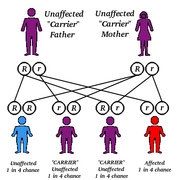Abstract
Only two cases of juvenile xanthogranuloma of the larynx have been previously reported in the literature. We report a new case, which occurred in an 18-month-old girl. The patient was brought to us for treatment of stridor and respiratory distress. During examination, she was found to have a subglottic mass. The lesion was treated with laser microlaryngoscopy, which relieved the patient's respiratory distress and obviated the need for tracheotomy. Pathologic examination of the mass revealed that it was consistent with a juvenile xanthogranuloma. Juvenile xanthogranuloma is generally a benign and self-limiting disease, but complications can occur when the space that the tumor occupies causes functional impairment.
Introduction
Stridor in infants and young children is a common symptom that can have numerous causes. In the absence of signs of infection, the physician should consider the possibility of a structural abnormality. Such an abnormality can include congenital subglottic stenosis or hemangioma.
In this article, we report a case of stridor that was caused by juvenile xanthogranuloma in the subglottic area. No associated cutaneous lesions were present. Laser excision of the lesion led to a prompt relief of the respiratory distress. To our knowledge, this is only the third reported case of juvenile xanthogranuloma of the larynx.
Case report
An 18-month-old girl was hospitalized with a 2-week history of noisy breathing and respiratory difficulty that had not responded to outpatient treatment. She was initially brought to a pediatrician for evaluation of a whistling sound while breathing; she did not exhibit any respiratory distress at that time. Her initial outpatient care was supportive, but she eventually developed respiratory distress.
In the hospital, the patient was treated with alternating albuterol and racemic epinephrine aerosols in addition to a systemic steroid, but relief was minimal. Evaluation of the subglottic area by fiberoptic bronchoscopy identified a 60% stenosis. Helical computed tomography of the neck with contrast infusion detected a possible vascular hemangioma in the right posterior lateral wall of the subglottic region. The patient was taken to the operating room for rigid bronchoscopy and possible ablation of the lesion. On examination of the subglottic area, a subglottic cyst was seen in the immediate posterior subglottis (figure 1). The cyst was incised by a neodymium:yttrium-aluminum-garnet (Nd:YAG) laser. The surface capsule was removed and sent for cytopathology. Analysis revealed that the lesion was a juvenile xanthogranuloma (figure 2).
[FIGURE 1-2 OMITTED]
Discussion
Juvenile xanthogranuloma is the most common form of non-Langerhans' cell histiocytosis. It is a benign, self-limiting disorder that usually appears as a localized cutaneous lesion, although it can affect other organs. The cutaneous lesions can be either solitary or multiple. They are generally yellowish-red, rubbery papulonodules, and they primarily involve the head, neck, and trunk. The most common extracutaneous site is the eye, followed by the lung and the liver. Rarely affected sites are the pericardium, myocardium, spleen, retroperitoneum, kidney, central nervous system, gonads, bones, and the larynx. (1, 2) These lesions are asymptomatic except when their location causes a functional impairment.
Cutaneous juvenile xanthogranuloma usually follows a benign course and does not require treatment. Systemic involvement is seen in 5 to 10% of these patients. (3) Because systemic juvenile xanthogranuloma can occur without cutaneous manifestations, the presence or absence of skin lesions does not appear to predict the presence of a systemic lesion. However, when skin lesions are present, they usually precede the development of other organ complications. (3)
Unlike other xanthomatous disorders, juvenile xanthogranuloma is not associated with metabolic abnormalities such as hyperlipidemia and diabetes insipidus. Some authors have reported an association of juvenile xanthogranuloma with cafe-au-lait spots and a family history of neurofibromatosis type 1 or type 2. (4, 5) A well-documented association has been found between juvenile xanthogranuloma and childhood leukemia, most often juvenile chronic myelogenous leukemia. (5) Other coexisting conditions that have been reported in single cases of patients with juvenile xanthogranuloma include insulindependent diabetes mellitus, urticaria pigmentosa, Niemann-Pick disease, cytomegalovirus infection, and ingestion of oral contraceptives.
Histopathologically, juvenile xanthogranuloma is characterized by sheets of unencapsulated, dense, and well-demarcated histiocytes. The cellular infiltrate also includes various proportions of giant cells, Touton cells, lymphocytes, eosinophils, and neutrophils. The morphology of the infiltrate varies with the clinical evolution of the lesion. (6)
Unless their location interferes with vital functions, systemic lesions do not require treatment. When treatment is necessary, radiotherapy, high-dose corticosteroids, and cyclosporine have been occasionally administered. However, response to these treatments is difficult to assess because of the possibility of spontaneous involution.
Our approach to the management of the subglottic stenosis in our patient was to proceed with conservative excision of the cyst in order to restore the patency of the airway. We thus avoided the need for tracheotomy, which was used by Benjamin et al (1) and Thevasagayam et al (2) in the other two reported cases of juvenile xanthogranuloma of the larynx.
References
(1.) Benjamin B, Motbey J, Ivers C. Kan A. Benign juvenile xanthogranuloma of the larynx. Int J Pediatr Otorhinolaryngol 1995;32:77-81.
(2.) Thevasagayam MS. Ghosh S, O'Neill D, et al. Isolated juvenile xanthogranuloma of the subglottis: Case report. Head Neck 2001 ;23:426-9.
(3.) Freyer DR, Kennedy R, Bostrom BC, et al. Juvenile xanthogranuloma: Forms of systemic disease and their clinical implications. J. Pediatr 1996;129:227-37.
(4.) Thami GP, Kaur S, Kanwar AJ. Association of juvenile xanthogranuloma with cafe-au-lait macules. Int J Dermatol 2001; 40:283-5.
(5.) Gutmann DH, Gurney JG, Shannon KM. Juvenile xanthogranuloma, neurofibromatosis 1, and juvenile chronic myeloid leukemia. Arch Dermatol 1996; 132:1390-1.
(6.) Hernandez-Martin A, Baselga E, Drolet BA, Esterly NB. Juvenile xanthogranuloma. J Am Acad Dermatol 1997:36(Pt 1):355-67; quiz 368-9.
From the Department of Pediatrics, Advocate Hope Children's Hospital, Oak Lawn, Ill.
Reprint requests: Silvio Marra, MD, 16001 S. 108th Ave., Orland Park, IL 60467. Phone: (708) 460-0007; fax: (708) 460-0005; e-mail: silviomarra@juno.com
COPYRIGHT 2003 Medquest Communications, LLC
COPYRIGHT 2003 Gale Group



